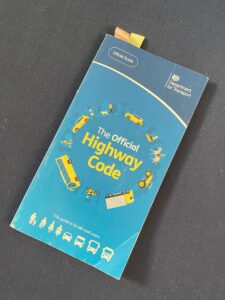A driving test can only cover a portion of the syllabus. The limits on this are both time and geography.
It would be wonderful to know that new drivers have been tested on the whole of the syllabus. But that is just not possible. In terms of time you are going to be within a 20 minute radius of the test centre. And for the most part a bit less than that. Allow for the pulling over and stopping a few times. Some time for manoeuvres and our radius gets less.
Geography will also limit what can be tested. Years ago if you did not like roundabouts you could book a test on the Isle of Wight which only used to have one roundabout on the whole island. Please note that this has changed.
Anyone who looks at driving test data will have noted that the pass rate for some of the Scottish islands is very good. The flip side of that is the pass rate for large inner city test centres is very poor. So it is logical to assume that the busier inner city test centres make the candidate have more interactions and therefore opportunities to fail.
I am reliably informed that while the Scottish Islands may have less interaction with other road users. The ability to deal with sheep is very useful. Not something that us inner city instructors have any experience with whatsoever.
Bearing in mind that passing the driving test allows your pupil to drive on any public road a vehicle of 3.5 tonne is the test enough. A sheep loving pupil from the islands may well find a busy inner city roundabout quite intimidating. By the same token our inner city jack the lad may find a flock of sheep rather bewildering.
So how can we cope with this. Looking at the big picture, data from test passes should have 2 characteristics, reliability and validity.
The first is concerned with the consistency of the data and the second with its relevance. We are going to look at this first one in some detail and the performance dips that come with it.
Reliability:
- Test-retest
- Interrater
- Internal consistency
- Test-retest. This looks at data over time. There will be two ways of looking at this. Repeating the test with the same examiner at the same time of day. Or doing it at different times of day.
To just keep repeating the same route at the same time with the same examiner is clearly a non-starter. Each test centre will have multiple routes which will test different aspects of the syllabus. Even if the route is the same, with the same cars, drivers and examiners. Because we are all different from day to day, our decisions and those of other drivers will be different day to day.
Will you keep getting the same results at a different time of the day. Clearly at different times of the day you will have a different number of interactions. Rush hour may have 200 interactions with other road users compared with 100 mid morning. One of the things that make the driving test unique is every driving situation is going to be different in some way.
The above starts to make the point that pupils should be able to deal with situations rather than places. A take away from this is get your pupil used to driving in places where they are not familiar with the roads.
Watch for the performance dip when they try somewhere new. Take them to different places. If they can cope with that with you in a place they are not familiar with. They are more likely to be able to cope with an unfamiliar place when they are with a stranger like the examiner.
- Interrater. This looks at different examiners and do they give the same result. They obviously do for our serial failures. We have all heard the comment about a pupils’ chance of passing depending on which examiner they get.
Some examiners tend to be friendly and chatty and get the pupil to relax. Others tend to be more formal to allow the candidate to concentrate. The problem is you have no idea which examiner you will get. But also what is right for your pupil.
Is there a performance dip when someone other than the instructor is sat with your pupil.
Now it is not practical for your pupil to be out with different instructors all the time. But what you, the instructor can do, is adopt a different persona. You change your manner from friendly, banter loving instructor to that of a more formal demeanour. Would that affect your pupil. Or maybe the other way round if you are more formal with your instruction.
Another alternative is having someone else in the car. It could be someone known to the pupil like their mum or dad. It could be someone known to you. Obviously you clear it with the pupil first. But the bottom line is can they cope with a different person sitting next to them. Does having someone new in the car produce a performance dip?
- Internal consistency. Will different parts of the test produce the same result. A driving test does not have the time to test all parts of the syllabus of learning to drive. So what will happen is the various test routes will test as much of the National Syllabus as geographically possible for that centre.
This will give rise to a variety of routes which if nothing else, will stop local people from being bothered by having the same area used all the time. Also this stops us from learning, then teaching a route parrot fashion.
Would your pupil fail if they got a certain maneuver. Would a dual carriageway or a narrow road cause your pupil problems. Have they covered enough of the syllabus. Or to put it simply, would your pupil pass or fail with a different route and what does that mean for their safety when passed.
My favourite performance dip to look for here is lane changing. We are all aware of how they might slow down to let the car coming from behind get past. And before you know it they are travelling too slowly and are being overtaken and boxed in. Crossroads and large roundabouts all create the performance dip. It’s all about how they interact with the other road user.
Another performance dip is the concentration one. It seems that a lot of test fails come on the 30 minute mark. How many times does a pupil blow it at the last moment? But surely that means that their driving is not intuitive enough.
Validity:
- Construct
- Content
- Criterion
- Construct: Does this conform to our knowledge and theory of what is being tested (driving safely).
The Highway Code and Driving The Essential Skills will form the core of our knowledge of that. While an individual route may not cover everything. The Theory Test and its high pass mark will give it good coverage of The Syllabus.
- Content. Does this cover all aspects that it should.
Stock Photo ID: 1127743439
Is all of The Syllabus from The DVSA covered. Clearly it can not for a huge range of reasons. What can not be tested on a practical driving test can be covered on The Theory Test. But knowing what to do in bad weather or the dark is not the same as showing what to do.
Because of geographical and time restraints the range of the syllabus can not be covered. But the range of test routes an individual centre has along with the spread of them between examiners should go some way to meeting this requirement.
The test candidate will only be asked to do one manoeuvre but it is wise to know all four. We have no way of knowing which one of the four they will be doing. The same will go for all parts of the syllabus.
- Criterion. Are there other valid measures of a person’s ability to drive.
What other ways could you test a person’s ability to drive. It’s a very practical skill for something that could be up to 3.5 tonne MAM and driven at up to 70 mph on a public road. Surely we should only let someone be able to do that if they can demonstrate the skill to do so safely. Hence licensing and testing. Which is then followed by enforcement.
The bottom line is that the driving test will stay pretty much the same as it has always been. The changes to it reflect the changes in society. If we can get our pupils over the performance dips they will stand an excellent chance of passing and being a safe driver.
These performance dips are:
- New places
- New people or different personas
- Acting and reacting with the other road users (lane changing etc)
- Safe driving needing concentration
As instructors we should certainly do our best to cover all of the syllabus. The question might be what can we take away from looking at a driving test this way:
- Cover the syllabus as far as you are able
- Do not just do test routes
- Make sure your pupil can deal with situations rather than places
- Watch for performance dips
© Liam Greaney
driving-pro.com
Categories
Recent Posts
Get In Touch
Create a free acccount or login
To continue reading this information, you need a free account that can be created in under a minute. Join today or login
Like to be kept informed?
Our free Lite membership delivers newsflashes and weekly roundups directly to your inbox, so you never miss a beat. Or become a Premium member to enjoy the wide-ranging support & benefits we offer.








Share This: